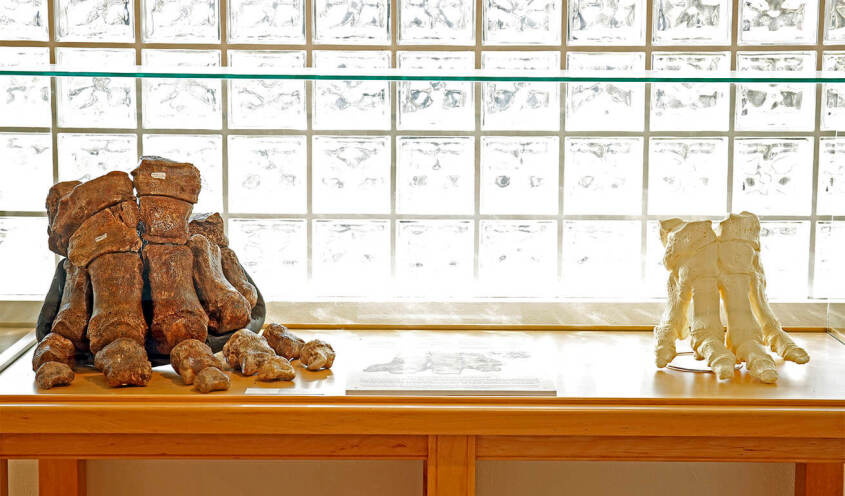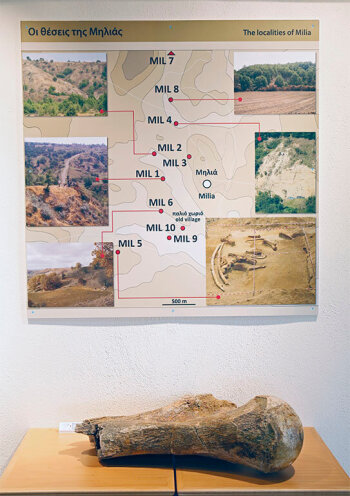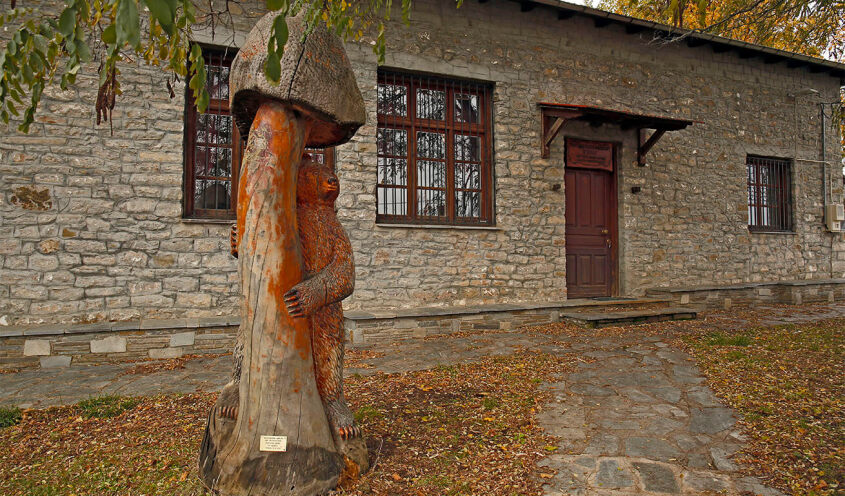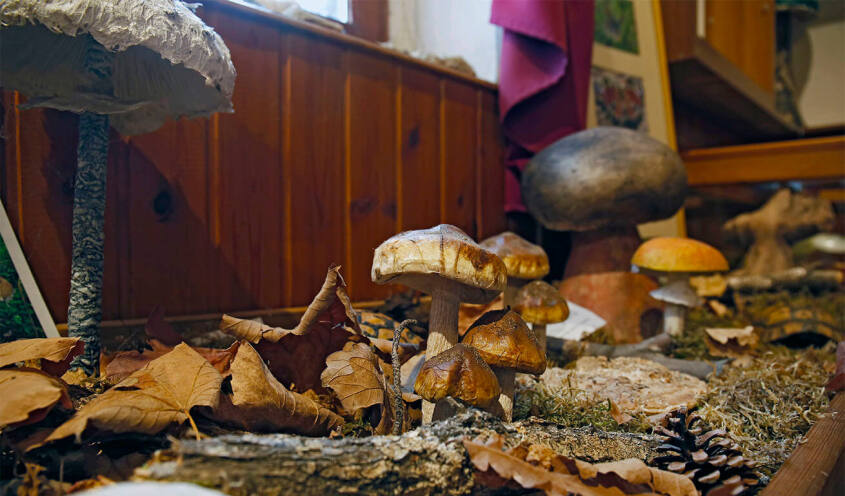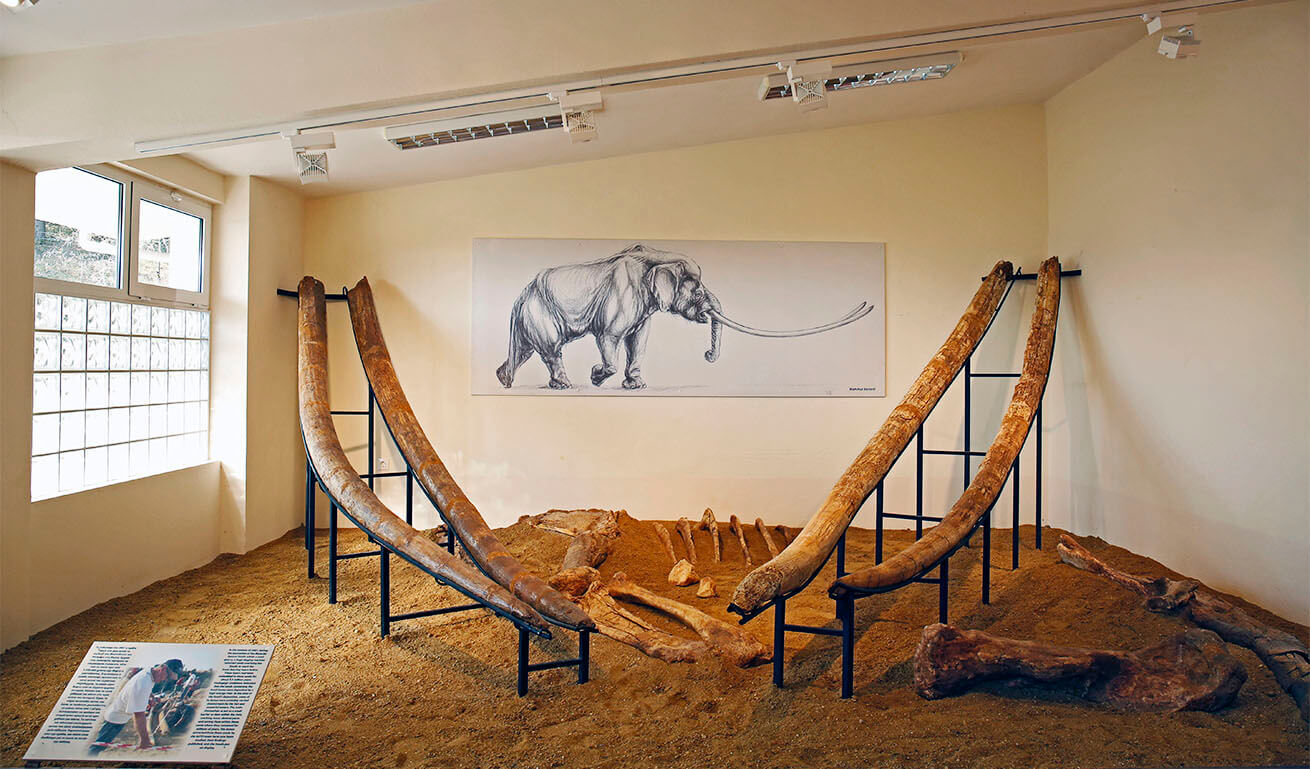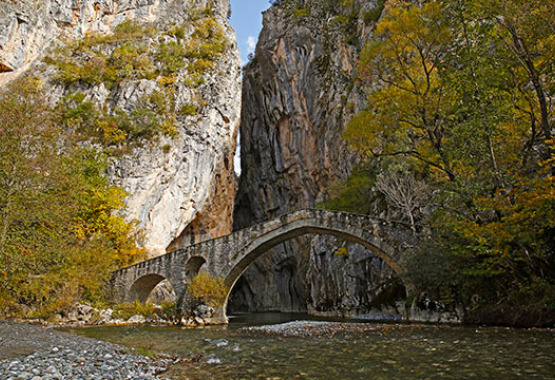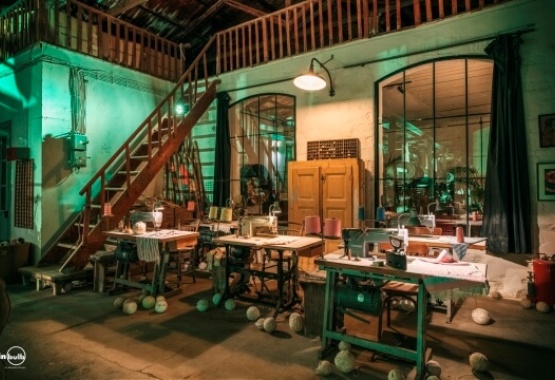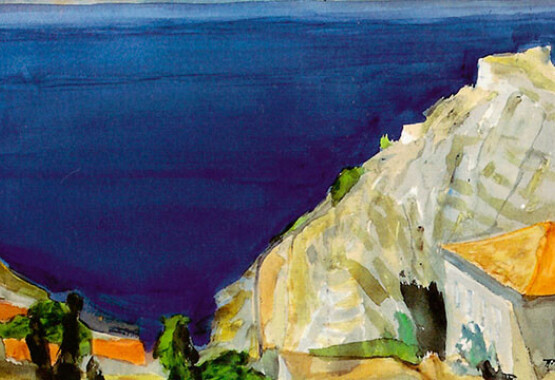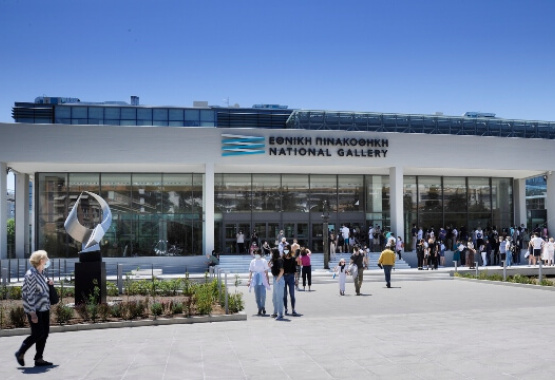
GREVENA
On display at the Natural History Museum of Milia, Grevena are the world’s largest tusks (5.03 metres long) ever found to date, earning them a place in the Guinness World Records. The museum is located on the fringes of Milia village, just 15 km from Grevena town, next to Egnatia motorway, in the direction of Kozani.
Its galleries are arranged according to the modern standards of museology, and display paleontological finds. The exhibits include items from the Ampelia site on the north outskirts of Grevena town in the area of Agios Georgios village, but mostly from the wider Milia locality, which is believed to have been an area covered by forests, and other types of thick vegetation, freshwater springs, rivers, and lakes, which formed a humid and warm climate, some 3.5 million years ago.
The excavations here identified 19 species of mammals and three species of turtles, of which two species were reported for the first time in the world. Another six were recorded for the first time in Greece. Smaller or larger skeletal sections confirm that large Rhinos (Stephanorhinus Jeanviret), tapirs and small horses of the odd-toed ungulates (perissodactyla) family, bovid, boars, antelopes, gazelles, deer of the even-toed ungulates (artiodactyla) family, carnivores such as the saber-toothed tiger, hystrix, archaic bear and its relative agriotherium, lived in the region.
Also roaming this area were the prehistoric Borson's mastodon (Mammut borsoni), of which important skeletal remains were found, as well as two impressive pairs of tusks, measuring 4.39 and 5.03 metres respectively, about three million years old. These are perhaps the museum’s top exhibits. The large parts of the skeleton of an archaic elephant (Elephas - Palaeoloxodon- antiquus), about 200,000 years old, discovered in the Ampelia location, indicate that Greece was probably a refuge for many animals, when icy conditions prevailed in the rest of Europe.
The Mushroom Museum in the Lavda area opened in 2011 and it was established following the initiative of the members of the local Cultural Association.
It is housed in a beautiful stone building, which was once the primary school of the village. Its showcases display the area’s many species of mushroom, often with representations of their natural environment. The museum also provides material with information on all the mushrooms found in Greece, including audiovisual material for anyone interested in getting to know more about this amazing fungus. There are also small mushroom-themed sculptures on display.
As it does not employ staff on a permanent basis, the museum does not have fixed opening hours, so, especially during winter, it would be wise to pre-arrange your visit.
The assembly of the small Folk Art collections were made possible due to the efforts and care taken primarily by the local cultural associations in various villages. These displays seek to depict the customs and lifestyles of the past through objects, kitchenware, costumes and photos.
The two-storey stone-built old school, located in the square in Kydonies, houses an interesting collection, which includes, among other things, the typical tools used by builders, since masonry was the basic line of work of the locals.
Among the exhibits are a very realistic representation of an old-time room, with a bed and other useful household items & furniture, including the all-important loom.
The ground floor houses the office of the cultural association, where enquiries about visiting times can be made. Otherwise, especially in winter, ask for the key from the small cafe in the square.
Similar collections, along the same line, are located in the Mastorochori (stone mason) village of Agios Kosmas, in neighbouring Kyparissi, and also in Deskati village, which has a collection of mannequins dressed in costumes from around the world.
In the Kastri area, archaeologists have been working between the villages of Alatopetra and Polyneri since 1998, and they unearthed the ruins of an acropolis that belonged to a city of the Tymphaeans, who were part of the kingdom of Macedonia. The temple and other buildings, whose construction is dated to the late 4th c. - early 3rd c. B.C., indicate that this was a properly structured town that existed until about 150 B.C., when it was destroyed by the Romans who conquered Macedonia. The excavations are still in progress.
The Museums of Grevena
The whole area of Grevena is a huge open-air museum, with the National Park of North Pindos, the National Park of Valia Calda, the Aliakmonas River and its tributaries, the Geopark at Mikrovaltos area, the stone bridges and the gorges, as well as the old churches and monasteries. In the area there is only one museum, in the standard meaning of the term, with a number of exhibits included in the Guinness World Records.On display at the Natural History Museum of Milia, Grevena are the world’s largest tusks (5.03 metres long) ever found to date, earning them a place in the Guinness World Records. The museum is located on the fringes of Milia village, just 15 km from Grevena town, next to Egnatia motorway, in the direction of Kozani.
Its galleries are arranged according to the modern standards of museology, and display paleontological finds. The exhibits include items from the Ampelia site on the north outskirts of Grevena town in the area of Agios Georgios village, but mostly from the wider Milia locality, which is believed to have been an area covered by forests, and other types of thick vegetation, freshwater springs, rivers, and lakes, which formed a humid and warm climate, some 3.5 million years ago.
The excavations here identified 19 species of mammals and three species of turtles, of which two species were reported for the first time in the world. Another six were recorded for the first time in Greece. Smaller or larger skeletal sections confirm that large Rhinos (Stephanorhinus Jeanviret), tapirs and small horses of the odd-toed ungulates (perissodactyla) family, bovid, boars, antelopes, gazelles, deer of the even-toed ungulates (artiodactyla) family, carnivores such as the saber-toothed tiger, hystrix, archaic bear and its relative agriotherium, lived in the region.
Also roaming this area were the prehistoric Borson's mastodon (Mammut borsoni), of which important skeletal remains were found, as well as two impressive pairs of tusks, measuring 4.39 and 5.03 metres respectively, about three million years old. These are perhaps the museum’s top exhibits. The large parts of the skeleton of an archaic elephant (Elephas - Palaeoloxodon- antiquus), about 200,000 years old, discovered in the Ampelia location, indicate that Greece was probably a refuge for many animals, when icy conditions prevailed in the rest of Europe.
The Mushroom Museum in the Lavda area opened in 2011 and it was established following the initiative of the members of the local Cultural Association.
It is housed in a beautiful stone building, which was once the primary school of the village. Its showcases display the area’s many species of mushroom, often with representations of their natural environment. The museum also provides material with information on all the mushrooms found in Greece, including audiovisual material for anyone interested in getting to know more about this amazing fungus. There are also small mushroom-themed sculptures on display.
As it does not employ staff on a permanent basis, the museum does not have fixed opening hours, so, especially during winter, it would be wise to pre-arrange your visit.
The assembly of the small Folk Art collections were made possible due to the efforts and care taken primarily by the local cultural associations in various villages. These displays seek to depict the customs and lifestyles of the past through objects, kitchenware, costumes and photos.
The two-storey stone-built old school, located in the square in Kydonies, houses an interesting collection, which includes, among other things, the typical tools used by builders, since masonry was the basic line of work of the locals.
Among the exhibits are a very realistic representation of an old-time room, with a bed and other useful household items & furniture, including the all-important loom.
The ground floor houses the office of the cultural association, where enquiries about visiting times can be made. Otherwise, especially in winter, ask for the key from the small cafe in the square.
Similar collections, along the same line, are located in the Mastorochori (stone mason) village of Agios Kosmas, in neighbouring Kyparissi, and also in Deskati village, which has a collection of mannequins dressed in costumes from around the world.
In the Kastri area, archaeologists have been working between the villages of Alatopetra and Polyneri since 1998, and they unearthed the ruins of an acropolis that belonged to a city of the Tymphaeans, who were part of the kingdom of Macedonia. The temple and other buildings, whose construction is dated to the late 4th c. - early 3rd c. B.C., indicate that this was a properly structured town that existed until about 150 B.C., when it was destroyed by the Romans who conquered Macedonia. The excavations are still in progress.
